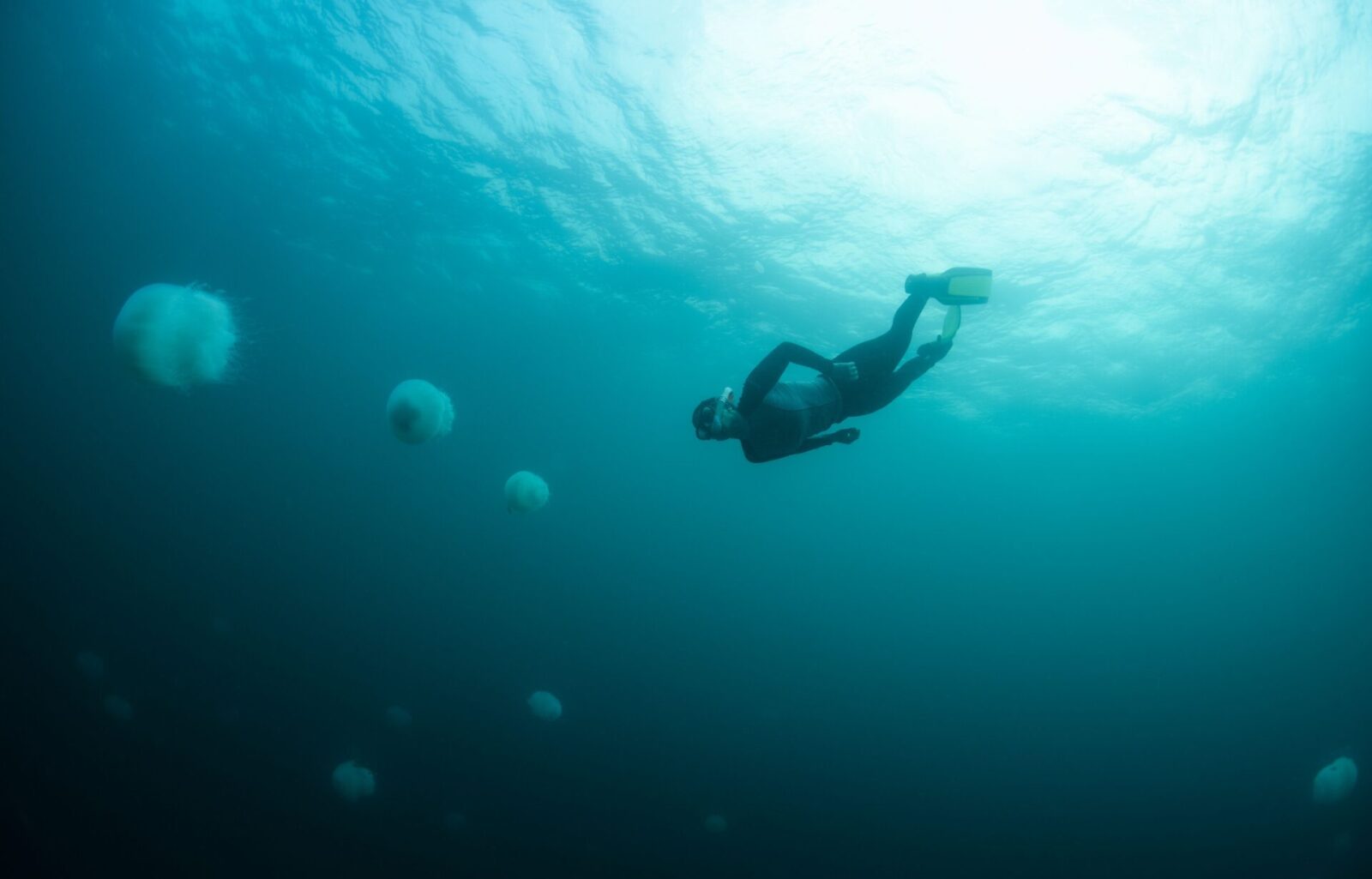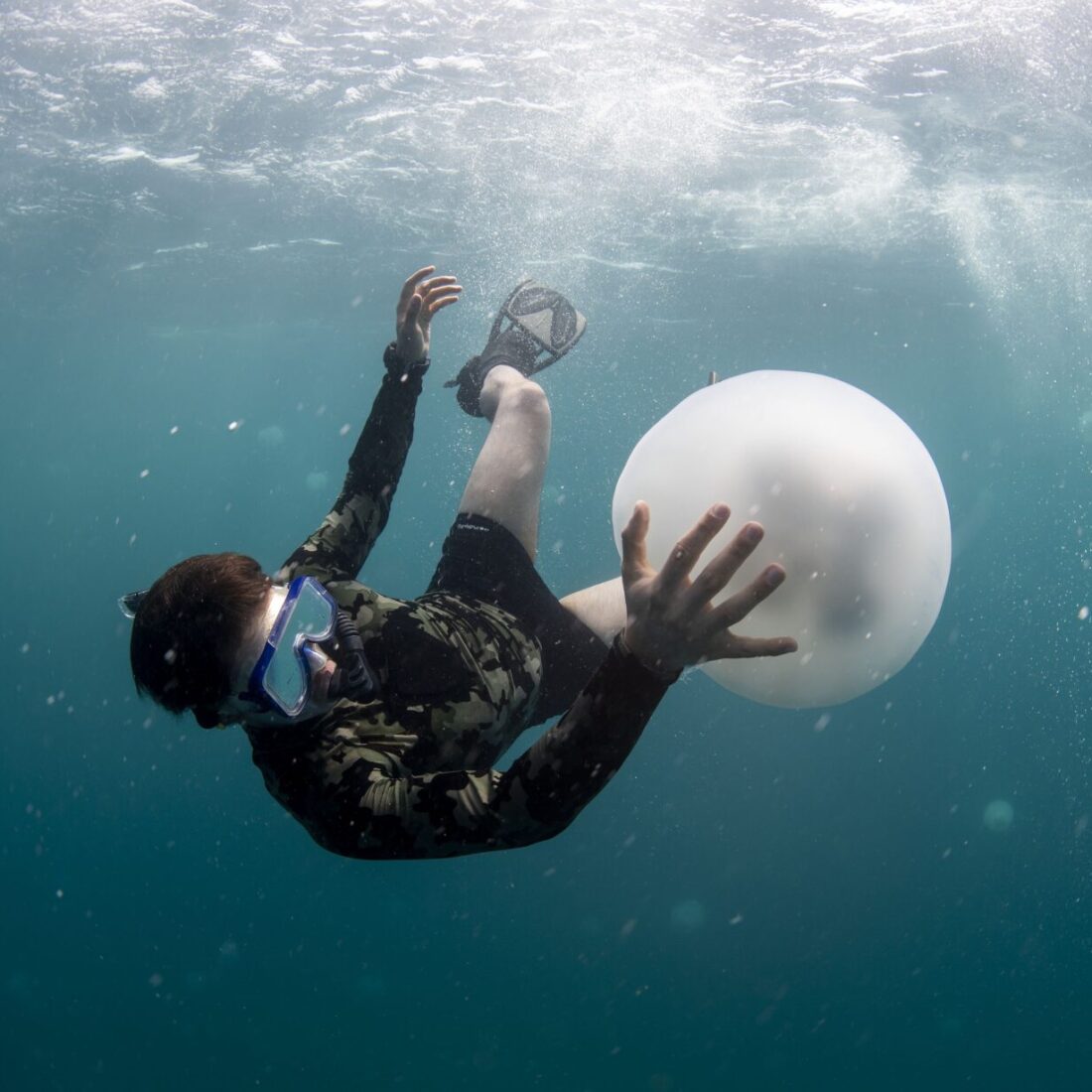The word “jellyfish” sounds like it describes a sweet and funny creature, doesn’t it? Sort of like “clownfish.”
Don’t let the name fool you, though — jellyfish are not fish at all. They are invertebrate sea animals with tiny stingers that stun or paralyze their prey. If you get in their swimming space, you may end up with a painful sting you’ll never forget.
Israel’s Mediterranean beaches have a yearly jellyfish influx, some years worse than others.
This summer, a huge swarm of jellyfish appeared off Haifa’s coast. Researchers from the University of Haifa’s Leon H. Charney School of Marine Sciences examined them and discovered they’re larger than usual.
“Overall, this is the summer bloom of jellyfish that we anticipate, but there’s a slight difference in the size of jellyfish — on average, they’re bigger this year than in other years,” explained University of Haifa Prof. Dror Angel.
He theorizes that their size is related to an abundant diet.
“We had a very rainy winter this year, and the runoff that reached the sea provided a lot of nutrients that contributed to the formation of the jellyfish bloom. The nutrients feed the algae; the algae bloom and are eaten by small plankton herbivores, and these are then eaten by the jellyfish.”

Angel does not draw any connection between the Covid-19 pandemic and the jumbo jellyfish.
“I don’t think the coronavirus has anything to do with the jellyfish,” he said. “I think nature is the bigger player. We’re looking at cues like changes in temperature, as these probably play a role in determining when jellyfish appear. Rainy winters or more arid winters could determine the size of the bloom the following summer.”
Angel said that human-driven factors, such as pollution, could also be affecting the blooms. However, “At the moment, we think natural phenomena have more of an impact than human effects.”
Situated at the doorstep of the Mediterranean Sea, the Charney School of Marine Sciences does all sorts of groundbreaking research. Click here to read about the sharks that return to Israel’s shore year after year.
Regarding the school’s research on jellyfish, Angel said, “We’re trying to understand the ecology of the various jellyfish in our coastal waters — when do the blooms appear, why are they bigger or smaller in some years, and so on.

“We’re also looking for missing evidence in the lifecycle of the nomad jellyfish – where are certain life stages found, what eats the jellyfish and what do the jellyfish eat, how they interact with the marine system.”
The scientists are even exploring how jellyfish could be harnessed to reduce microplastic pollution in the water, and how their stinging mechanism could be copied as a new drug-delivery system.
“One of the outstanding observations over the past decade is that we keep finding what we consider new jellyfish in our coastal waters,” said Angel.
“Different, intriguing species keep appearing. Although we consider them new, it’s possible that they’ve been around and we just didn’t see them until they became more abundant. It seems that the more you look, the more you see.”
To find out more click on our story seven fascinating facts about jellyfish.

















